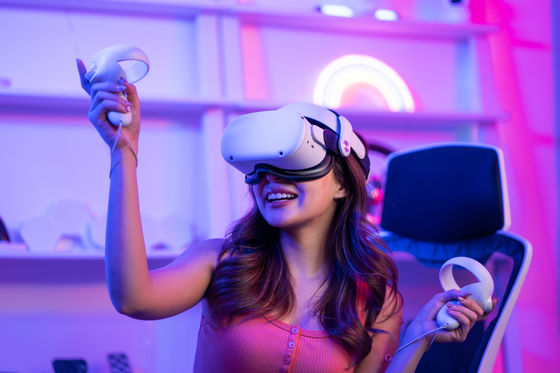The history of how science fiction and science have inspired each other, as seen in ChatGPT

In May 2024, OpenAI CEO Sam Altman compared the 2013 sci-fi romance film '
ChatGPT and the movie 'Her' are just the latest example of the 'sci-fi feedback loop'
https://theconversation.com/chatgpt-and-the-movie-her-are-just-the-latest-example-of-the-sci-fi-feedback-loop-232784
The interplay between science fiction and the real world of science is often called a 'science fiction feedback loop,' and Virk says a classic example of this is a trip to the moon.
Influenced by Jules Verne's 1865 novel A Trip to the Moon and the science fiction works of H.G. Wells, the 1902 film A Trip to the Moon depicted a space voyage to the moon in a cannon-launched capsule spaceship.
[Japanese subtitles] 'Le Voyage dans la Lune / A Trip to the Moon' (1902) - YouTube
The novels of Verne and Wells also influenced other rocket scientists, including American rocket scientist Robert Goddard, German engineer Hermann Oberth, and Oberth's student Wernher von Braun.
The rockets developed by these researchers would go on to inspire later films: For example, the rocket featured in the 1950 film ' The Moon War ' looks just like the V2 rocket developed by von Braun during World War II, Virk points out.
Rockets aren't the only sci-fi feedback loop: the personal computing revolution of the 1970s and 1980s directly influenced the work of cyberpunk authors Neal Stephenson and William Gibson.
These works can then inspire other real-world technological works, creating another cycle of sci-fi feedback loops. In his 1992 novel ' Snow Crash ,' Stevenson coined the term 'metaverse' to refer to a 3D game-like world accessed through VR goggles.

Since then, many Silicon Valley entrepreneurs have been trying to make the metaverse a reality, including the virtual world service 'Second Life' released in 2003.
The birth of the metaverse has inspired many more science fiction works. According to Virk's research, science fiction writer Ernest Cline has been playing Second Life for a long time, and Virk believes that this was the inspiration for '
The metaverse has continued to attract many people since then, and employees of VR company Oculus VR (now Meta Reality Labs) were given copies of Game Wars to read while developing headsets.

Sci-fi feedback loops can also be found in unexpected places: Steve Pearlman, a developer of Apple's media player QuickTime, said he was inspired by an episode of Star Trek, the 1966 science fiction series in which the android Lieutenant Commander Data sifts through multiple video and audio files.
Rob Haitani, who designed the operating system for the PalmPilot mobile device released in 1997, once said that the bridge of the Enterprise, a spaceship that appears in the Star Trek series, influenced the device's interface.
In the movie 'Her' mentioned at the beginning, the main character Theodore, played by Joaquin Phoenix, falls in love with the AI assistant 'Samantha' voiced by Scarlett Johansson, and eventually begins to think of her as a lover. As an aside, Johansson is suing OpenAI because one of ChatGPT's voices, 'Sky,' sounds too similar to Johansson's.
her
— Sam Altman (@sama) May 13, 2024
In fact, the relationship between 'Her' and ChatGPT is also one of the sci-fi feedback loops. Spike Jones, director and screenwriter of 'Her', said at the premiere screening of the film, 'The idea for this work came from trying out ALICE , a chatbot that can have intimate conversations, about 10 years ago.'
ALICE was the most natural-sounding chatbot of its time, and won the Loebner Prize three times, which is given to AI judged to be the most human-like.
' Blade Runner 2049 ,' released four years after 'Her,' featured a virtual girlfriend named Joy with a holographic body. Many companies are already developing virtual girlfriends, and Virk believes this trend will definitely influence future sci-fi feedback loops.
At the end of his article, Virk quotes sci-fi author Cory Doctorow from a 2017 article : 'Science fiction does one thing better than predict the future: it changes it.'
◆ Forum is currently open
A forum related to this article has been set up on the official GIGAZINE Discord server . Anyone can post freely, so please feel free to comment! If you do not have a Discord account, please refer to the account creation procedure explanation article to create an account!
• Discord | 'What is the invention that made science fiction a reality?' | GIGAZINE
https://discord.com/channels/1037961069903216680/1269960480189841418
Related Posts:
in Science, Posted by log1l_ks







